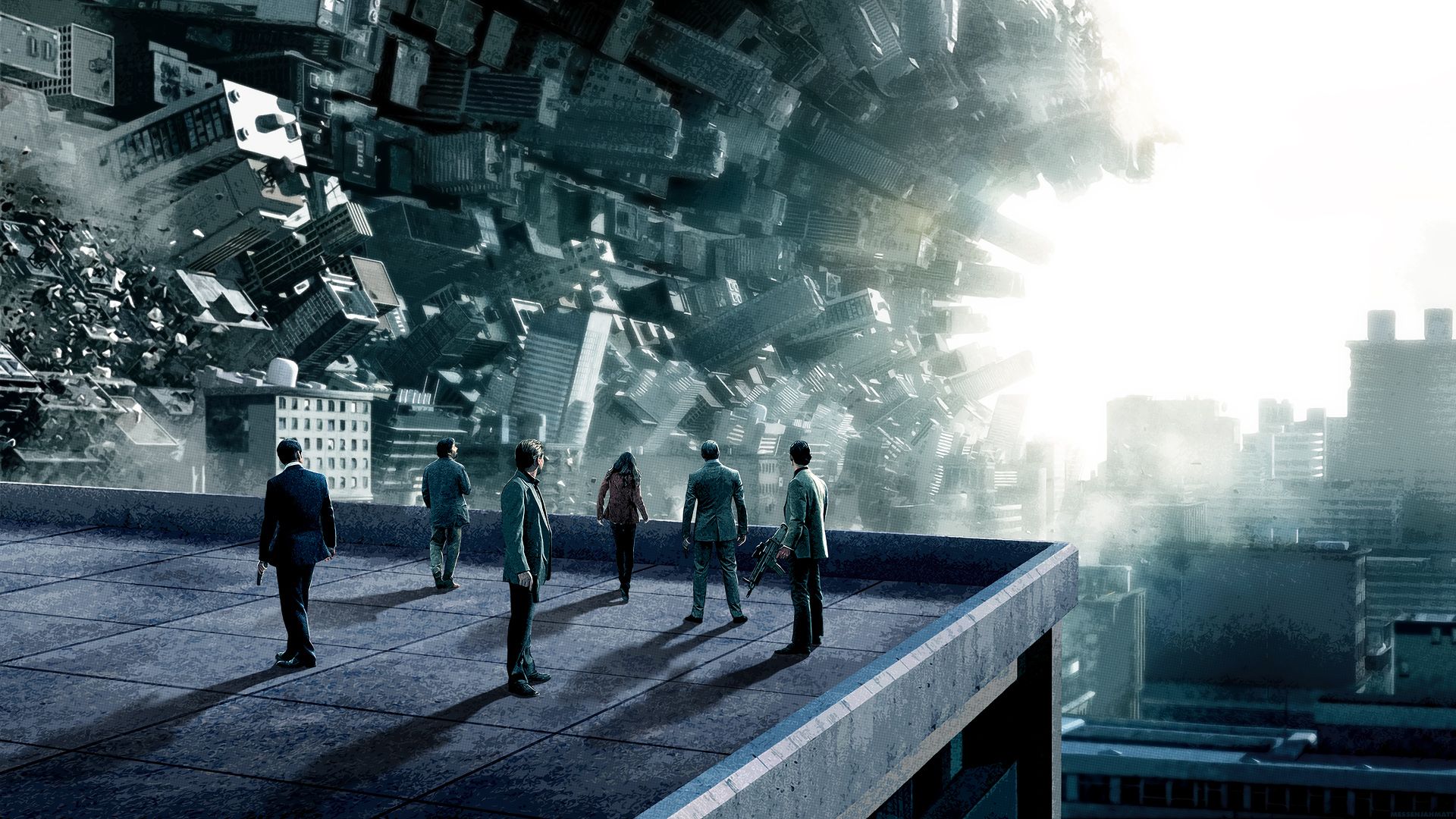Ever felt like you're living in a dream inside another dream? Well, that's what it feels like when you dive into the world of "like inception." It’s not just about movies or theories; it’s about exploring the layers of reality, dreams, and how they intertwine in ways that make your mind go "whoa." If you’ve ever wondered how deep the rabbit hole goes, buckle up because we’re about to take a wild ride through the layers of consciousness, dreams, and the science behind it all.
When Christopher Nolan’s "Inception" hit theaters back in 2010, it blew everyone’s minds. The concept of dreams within dreams wasn’t just a cool plot twist; it was a gateway to understanding the complexity of the human mind. The idea of "like inception" isn’t just limited to movies—it’s a real phenomenon that scientists, psychologists, and even philosophers have been exploring for years. So, whether you’re here to geek out about dreams or just want to know how deep the layers go, this article has got you covered.
Think of it like peeling an onion. Each layer reveals something new, something unexpected. And just like in the movie, every layer of a dream can feel more intense, more vivid, and more real than the last. So, are you ready to dive into the world of "like inception"? Let’s go!
What Exactly is "Like Inception"?
At its core, "like inception" refers to the idea of dreams within dreams. It’s the concept that your subconscious can create layers of reality, each one feeling as real as the one before it. Imagine falling asleep in your bed, only to wake up in another dream where you’re doing something completely different. Then, within that dream, you fall asleep again, and the cycle continues. It’s a mind-bending concept that challenges our understanding of reality and consciousness.
Breaking Down the Concept
To understand "like inception," we need to break it down into its basic components. First, there’s the idea of lucid dreaming, where you’re aware that you’re dreaming and can sometimes control what happens. Then, there’s the concept of nested dreams, where one dream exists inside another. Finally, there’s the philosophical question of whether our waking life is just another layer of a much larger dream.
Here’s a quick breakdown:
- Lucid Dreaming: Being aware that you’re dreaming.
- Nested Dreams: Dreams within dreams, creating layers of consciousness.
- Philosophical Questions: Is reality just a big dream?
Why Does "Like Inception" Matter?
Understanding "like inception" isn’t just about geeking out over movies. It’s about exploring the depths of human consciousness and how our minds work. By studying dreams within dreams, scientists can gain insights into how the brain processes information, stores memories, and even how it creates alternate realities. It’s not just science fiction; it’s real science that could change how we understand the human mind.
The Science Behind It
Research has shown that during REM sleep, the part of the brain responsible for processing emotions and memories is highly active. This is why dreams can feel so vivid and emotional. When you experience a "like inception" moment, your brain is essentially creating a new layer of reality, complete with its own rules and logic. It’s like your mind is running a simulation within a simulation.
How Common is "Like Inception" in Real Life?
Believe it or not, "like inception" isn’t as rare as you might think. Many people report experiencing dreams within dreams, especially if they practice lucid dreaming. In fact, a study published in the journal "Consciousness and Cognition" found that around 50% of people have experienced at least one lucid dream in their lifetime. And for those who practice regularly, the experience can become much more common.
Factors That Influence "Like Inception"
Several factors can influence the likelihood of experiencing "like inception." These include:
- Sleep Quality: Better sleep quality can lead to more vivid dreams.
- Meditation: Practicing mindfulness and meditation can enhance awareness during dreams.
- Diet: Certain foods and supplements, like vitamin B6, can increase dream recall.
Exploring the Philosophy of "Like Inception"
Philosophers have been debating the nature of reality for centuries, and "like inception" adds a whole new layer to the conversation. If dreams can feel as real as waking life, how do we know that our waking life isn’t just another layer of a much larger dream? It’s a question that has intrigued thinkers from Plato to Descartes, and it’s one that continues to inspire debate today.
Famous Philosophers on Reality
Some of the most famous philosophers have weighed in on the concept of reality and dreams:
- Plato: Believed that our sensory experiences are just shadows of a higher reality.
- Descartes: Questioned whether we can ever truly know if we’re awake or dreaming.
- Berkeley: Argued that reality exists only in the mind of the perceiver.
The Psychology of "Like Inception"
From a psychological perspective, "like inception" offers a fascinating glimpse into the workings of the human mind. It shows how our brains can create alternate realities and how those realities can influence our waking life. By studying dreams within dreams, psychologists can gain insights into how the subconscious mind processes emotions, fears, and desires.
How Dreams Impact Our Waking Life
Dreams, especially those involving "like inception," can have a profound impact on our waking life. They can help us process emotions, solve problems, and even inspire creativity. For example, many famous inventions and works of art were inspired by dreams, including Mary Shelley’s "Frankenstein" and the periodic table of elements.
Practical Tips for Experiencing "Like Inception"
Want to experience "like inception" for yourself? Here are some practical tips to get you started:
- Keep a Dream Journal: Write down your dreams as soon as you wake up.
- Practice Reality Checks: Regularly ask yourself if you’re dreaming.
- Use Visualization Techniques: Imagine yourself falling into a dream within a dream.
Common Mistakes to Avoid
While experimenting with "like inception" can be fun, there are a few common mistakes to avoid:
- Overthinking: Trying too hard can make it harder to achieve lucid dreams.
- Ignoring Sleep Hygiene: Poor sleep quality can reduce dream recall.
- Expecting Immediate Results: It takes time and practice to master lucid dreaming.
Conclusion: Embrace the Mystery of "Like Inception"
In conclusion, "like inception" is more than just a cool concept from a movie. It’s a fascinating exploration of the human mind, consciousness, and reality itself. Whether you’re a scientist, philosopher, or just someone who loves to geek out over dreams, there’s something for everyone in this mind-bending world. So, the next time you find yourself in a dream within a dream, take a moment to appreciate the complexity of the human mind and the endless possibilities it offers.
And remember, the journey doesn’t end here. If you enjoyed this article, why not share it with your friends or leave a comment below? Who knows, maybe together we can uncover even more layers of the "like inception" phenomenon. Until next time, keep exploring, keep dreaming, and keep questioning reality!
Table of Contents


